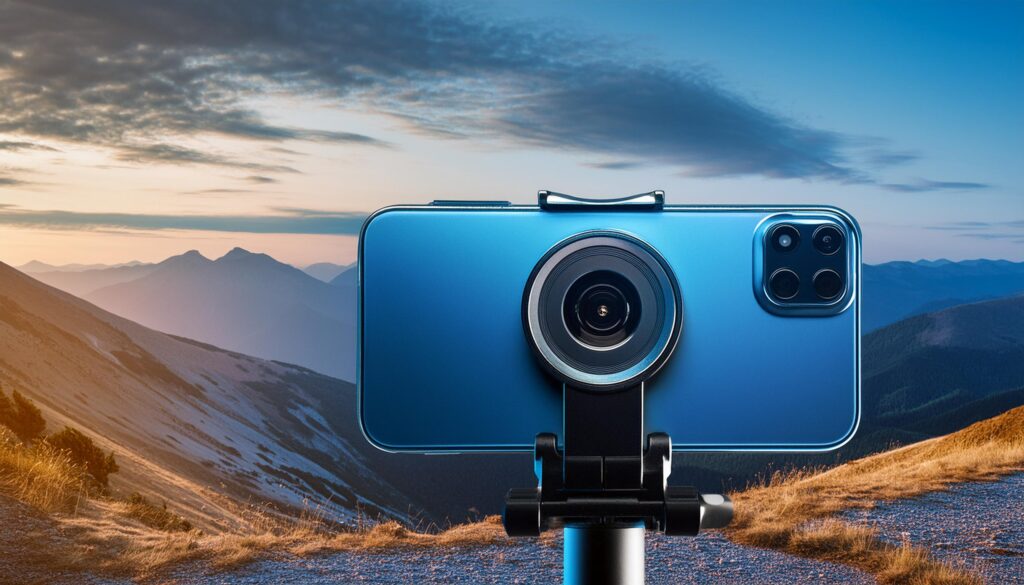
In today’s smartphone market, the main camera has become one of the most critical features for consumers. As technology advances, smartphone cameras continue to evolve, offering an array of sophisticated features that cater to both amateur photographers and seasoned professionals. Here’s a deep dive into the key features that define the main cameras in modern smartphones.
Megapixels and Sensor Size
Megapixels (MP):
The resolution of a camera is often measured in megapixels. Higher megapixel counts allow for greater detail and larger print sizes without losing quality. However, more megapixels don’t always equate to better image quality, as the sensor size and other factors also play crucial roles.
Sensor Size:
A larger sensor can capture more light, leading to better performance in low-light conditions and a shallower depth of field. This results in more detailed and vibrant images, with less noise in darker settings.
Aperture and Lens Quality
Aperture:
The aperture, indicated by an f-number (e.g., f/1.8), determines how much light enters the camera sensor. A lower f-number means a wider aperture, which allows more light to reach the sensor, enhancing performance in low-light conditions and enabling a shallow depth of field for those desirable blurred backgrounds (bokeh effect).
Lens Quality:
High-quality lenses can significantly improve image clarity and color accuracy. Advanced coatings and precision-engineered optics help reduce lens flare, chromatic aberration, and distortion.
Image Stabilization
Optical Image Stabilization (OIS):
OIS compensates for small movements and shakes by physically adjusting the camera lens or sensor. This feature is particularly beneficial in low-light conditions and when capturing videos, resulting in sharper images and smoother video footage.
Electronic Image Stabilization (EIS):
EIS uses software algorithms to reduce blurring and stabilize videos. While not as effective as OIS, it can still improve video quality, especially when combined with OIS in hybrid systems.
Autofocus Technologies
Phase Detection Autofocus (PDAF):
PDAF uses special sensors to quickly and accurately focus on the subject by comparing two images. This technology provides faster focusing speeds, which is crucial for capturing moving subjects and ensuring sharp images.
Laser Autofocus:
Laser autofocus measures the distance to the subject using a laser beam, allowing for rapid and precise focusing, even in low-light conditions.
Dual Pixel Autofocus:
Each pixel on the sensor is split into two photodiodes, enabling faster and more accurate focus by analyzing the phase difference between the two images. This technology is particularly effective for tracking moving subjects.
HDR and Computational Photography
High Dynamic Range (HDR):
HDR technology combines multiple exposures to create a single image with balanced lighting and enhanced details in both shadows and highlights. This feature is essential for capturing scenes with a wide range of lighting conditions.
Computational Photography:
Leveraging advanced algorithms and AI, computational photography enhances image quality by merging multiple frames, reducing noise, and optimizing details. Features like night mode, portrait mode, and scene recognition are products of computational photography, enabling users to capture professional-quality images effortlessly.
Video Capabilities
4K and 8K Video Recording:
Modern smartphones often support 4K and even 8K video recording, providing ultra-high-definition video quality. These resolutions offer incredible detail and clarity, making them ideal for professional videography and content creation.
Slow Motion and Time-Lapse:
Slow motion recording captures fast-moving subjects in detail by recording at high frame rates, while time-lapse condenses long-duration events into short videos. These features add creative versatility to smartphone videography.
Advanced Features
Pro Mode:
Pro mode provides manual control over camera settings such as ISO, shutter speed, white balance, and focus. This feature is ideal for photography enthusiasts who want more control over their shots.
AI Enhancements:
Artificial intelligence in camera systems can automatically detect scenes, optimize settings, and apply post-processing effects to enhance image quality. AI-driven features like beautification, scene detection, and auto-HDR simplify the photography process while delivering stunning results.
Conclusion
The main camera features in modern smartphones have revolutionized mobile photography, making it accessible and enjoyable for everyone. From high megapixel counts and large sensors to advanced autofocus systems and AI enhancements, these features enable users to capture stunning images and videos with ease. Understanding these features can help you choose a smartphone that meets your photography needs and allows you to unleash your creativity.